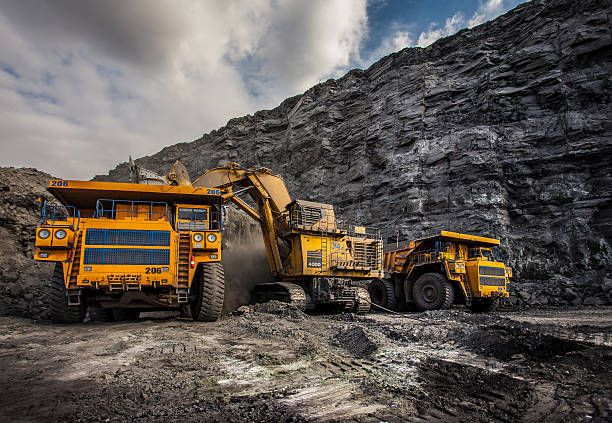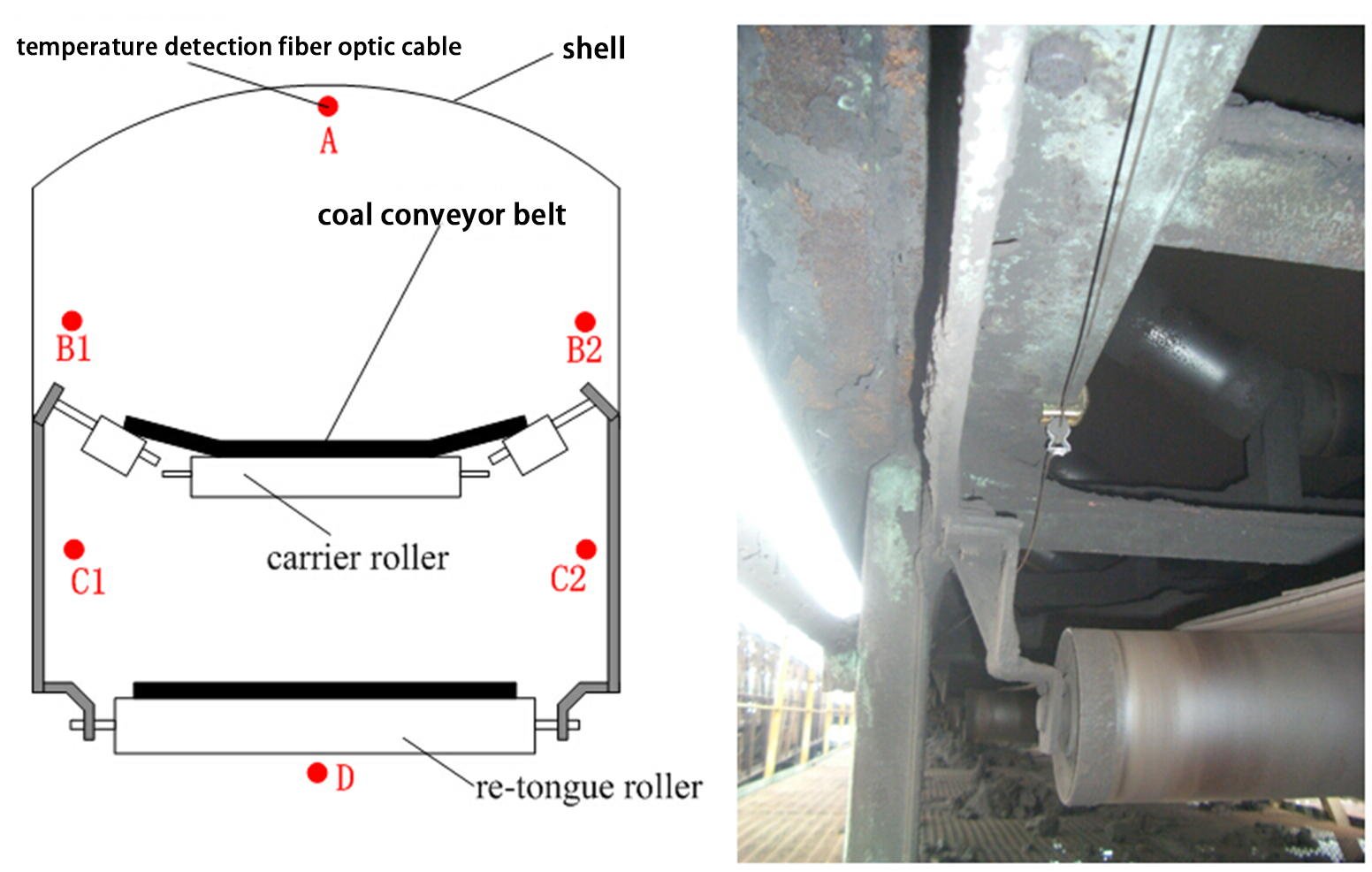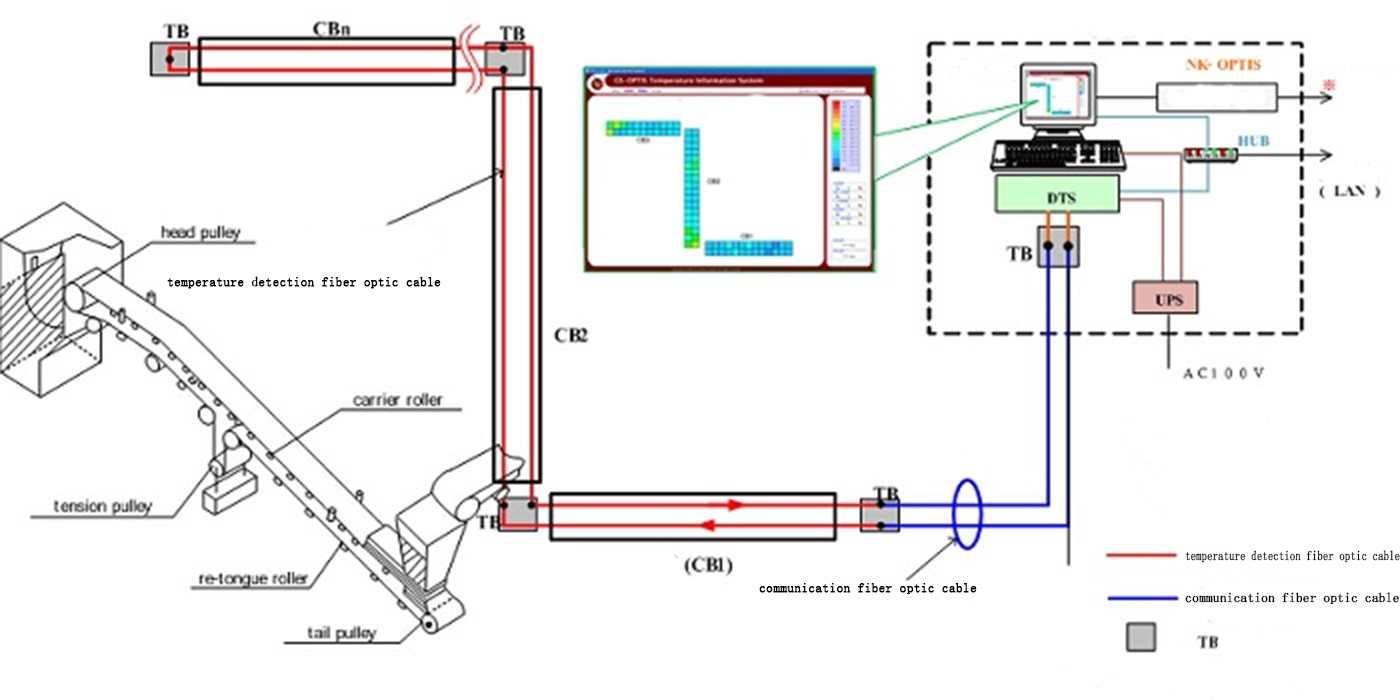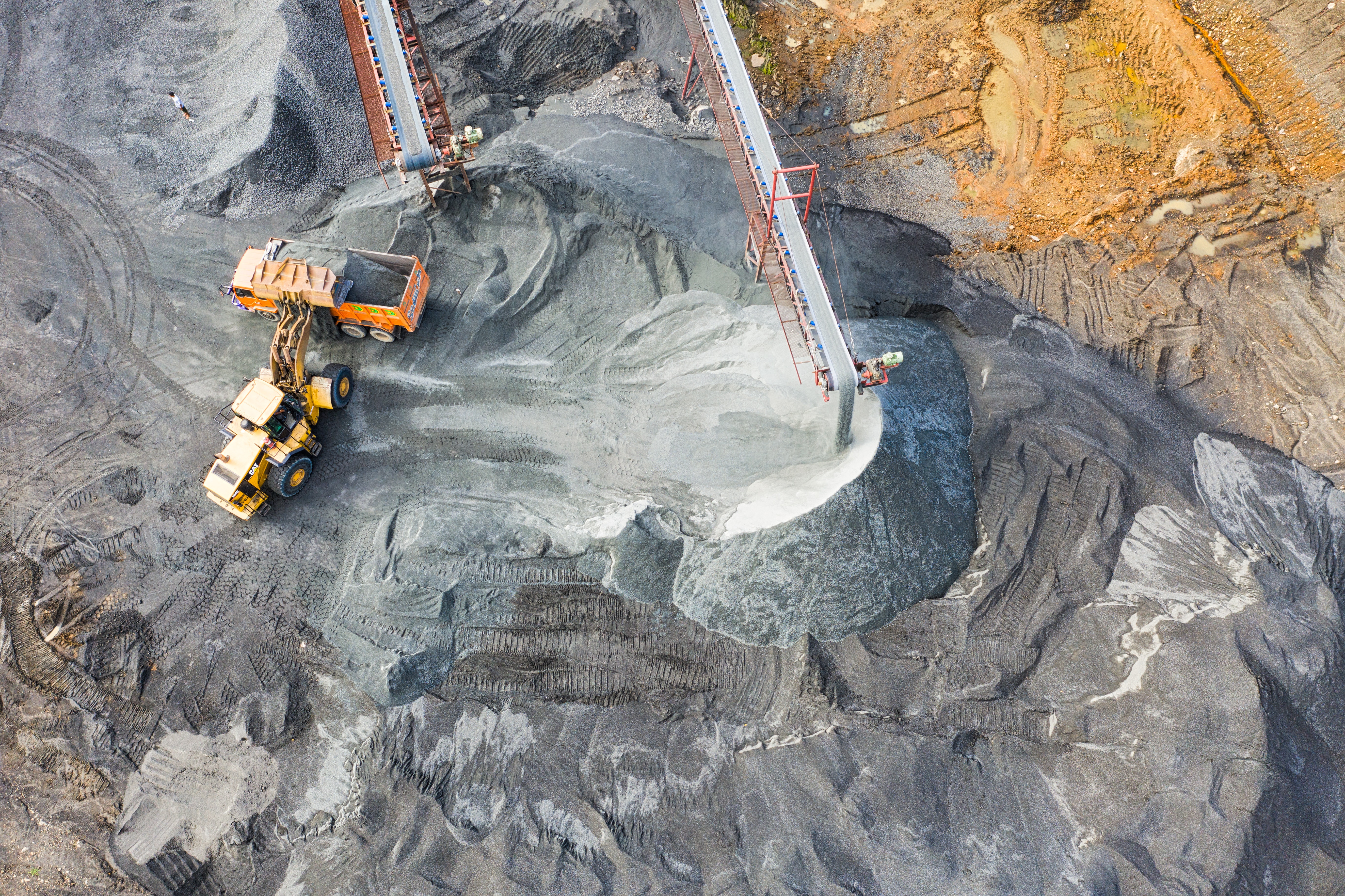Optimal monitoring with unique fire alarm (fire detection and early warning)
Coal mine safety
In the coal mining industry, safety monitoring has always been a critical task. Temperature is one of the important parameters in coal mine safety monitoring as high-temperature environments can pose risks of fire and explosions. Distributed optical fiber temperature sensing technology can provide a comprehensive temperature monitoring solution for coal mines to ensure the safety and reliability of the working environment.

Some important factors in the background of coal mine safety monitoring include:
High-temperature risks: Underground tunnels, mine shafts, and mining faces in coal mines often face high-temperature environments. High temperatures can arise from natural geothermal sources, mechanical equipment, electrical equipment, and geological structures, increasing the potential risks of fire and explosions.
Temperature anomaly detection: Timely detection of temperature anomalies is crucial for coal mine safety monitoring. Temperature anomalies can be caused by equipment malfunctions, electrical issues, natural factors, or other reasons. Therefore, real-time monitoring of temperatures in critical locations in coal mines can help identify temperature anomalies early and take necessary measures to prevent accidents.
Risk management in high-temperature areas: There are specific high-temperature areas in coal mines such as furnaces, coal storage areas, return airways, etc. Monitoring the temperature in these areas is essential for managing the risks of fire and explosions. Timely monitoring of temperature changes in high-temperature areas can help workers take appropriate measures such as ventilation and cooling to ensure the safety of the working environment.
Distributed fiber optic temperature sensing technology can provide comprehensive safety solutions for coal mines, ensuring the safety and reliability of the working environment. The following are application solutions for distributed fiber optic temperature sensing in coal mine safety monitoring:
Fiber optic installation: Deploy distributed fiber optic sensors in critical areas and around equipment in coal mines. The fiber optic can come into contact with tunnels, working faces, mine walls, conveyance systems, etc., to real-time monitor temperature changes.

Real-time monitoring and data acquisition: Through distributed fiber optic temperature sensing technology, monitor temperature changes in real-time in the areas connected to fiber optic sensors. The sensors collect temperature data with high precision and fast sampling rates, which is transmitted to the monitoring system for real-time analysis and recording.
Temperature alert and anomaly detection: Based on coal mine safety standards and preset temperature thresholds, the monitoring system can continuously monitor temperatures. If temperatures exceed or fall below the thresholds, temperature alerts and anomaly alarms are triggered. This enables timely notification to personnel to take appropriate measures to prevent accidents.

Thermal zone monitoring and risk management: Deploy fiber optic sensors to monitor temperatures in high-temperature areas of coal mines, such as furnaces, coal stockpiles, and ventilation ducts. Timely monitoring of temperature changes in these high-temperature areas helps personnel take appropriate measures, such as ventilation and cooling, to reduce the risk of fire and explosion.
Remote monitoring and alarms: The distributed fiber optic temperature sensing system can be connected to a central control room or remote management platform, enabling remote monitoring and alarm functions. This allows personnel to monitor temperature changes anytime and anywhere, and take appropriate actions when necessary.
 Through the application of distributed fiber optic temperature sensing technology, coal mines can achieve real-time temperature monitoring of critical areas and equipment, enabling the early detection of temperature anomalies and the implementation of necessary measures to ensure the safe operation of the mine. This helps to reduce the risks of fires and explosions, safeguard the safety of miners, and improve the production efficiency and reliability of the coal mine.
Through the application of distributed fiber optic temperature sensing technology, coal mines can achieve real-time temperature monitoring of critical areas and equipment, enabling the early detection of temperature anomalies and the implementation of necessary measures to ensure the safe operation of the mine. This helps to reduce the risks of fires and explosions, safeguard the safety of miners, and improve the production efficiency and reliability of the coal mine.
PREVIOUS:Coal storage yard
NEXT:Data center





